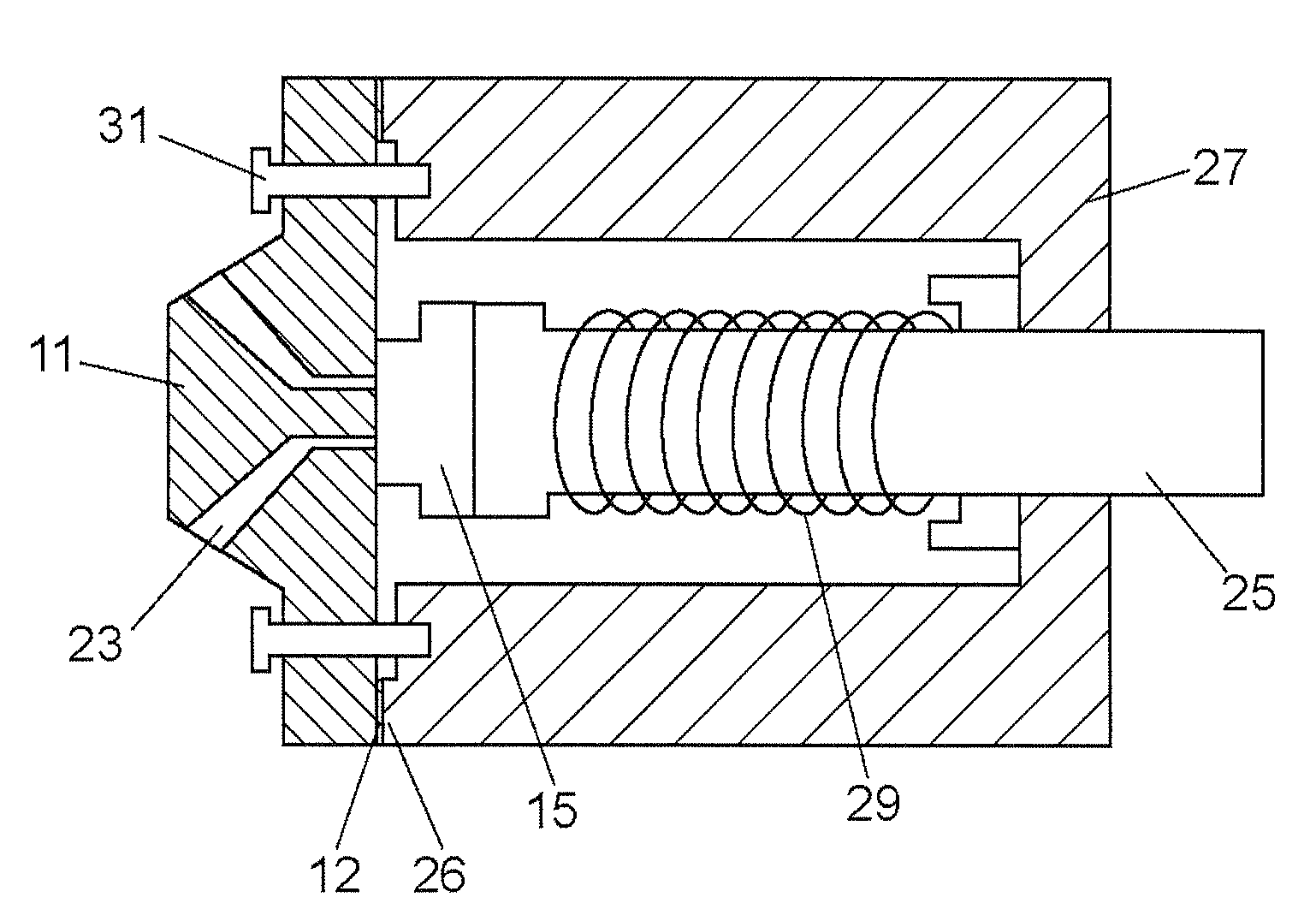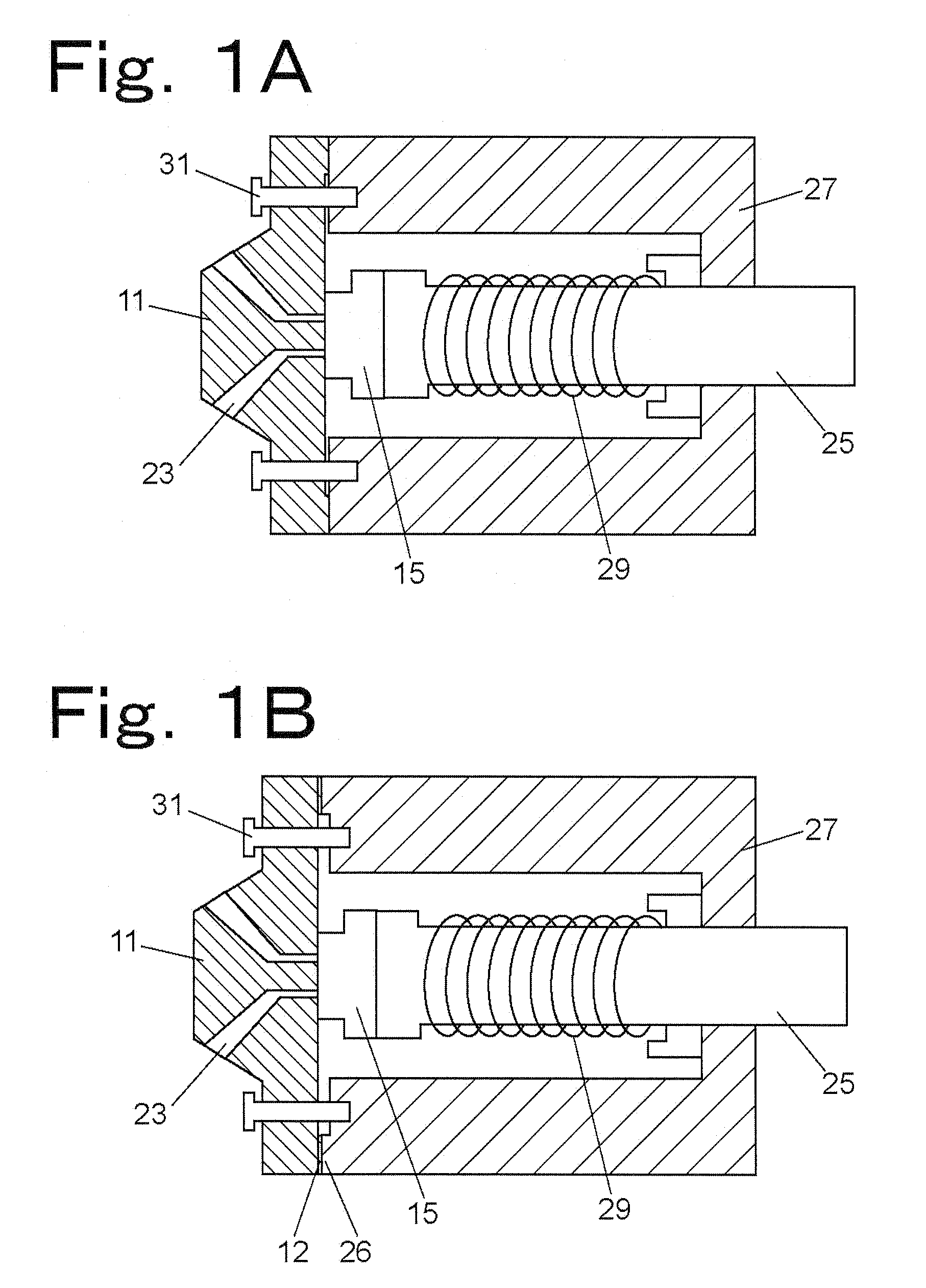Channel switching valve
a channel switching valve and valve body technology, applied in the direction of valve operating means/release devices, machines/engines, instruments, etc., can solve the problems of increased rotational torque of the channel switching valve, fluid leakage, cross-contamination, etc., to increase the lifetime of the valve, reduce the pressing force applied by the elastic member, and easy to change
- Summary
- Abstract
- Description
- Claims
- Application Information
AI Technical Summary
Benefits of technology
Problems solved by technology
Method used
Image
Examples
first embodiment
[0042]FIGS. 1A and 1B are schematic views showing the structure of a channel switching valve according to a first embodiment of the present invention. FIG. 1A and FIG. 1B show two states of the channel switching valve, between which the stroke of a coil spring as an elastic member is changed by rotating one of a stator 11 and a body section 27. More specifically, FIG. 1A shows a state where the stroke is shortened and FIG. 1B shows a state where the stroke is lengthened. FIGS. 2A and 2B show the stator 11 of the channel switching valve according to the first embodiment of the present invention, FIGS. 3A and 3B show the body section 27 of the channel switching valve according to the first embodiment of the present invention, and FIG. 3C shows a rotor 15 placed in the body section 27.
[0043]The stator 11 is made of stainless steel, and is integrally formed with a housing top to which flow channels are to be connected. The stator 11 has a contact surface 13 being in contact with the rot...
second embodiment
[0054]FIGS. 4A and 4B are perspective views of the rotor 15 placed in the body section 27 and the shaft 25 of a channel switching valve according to a second embodiment of the present invention. The upper surface of the rotor 15 shown in FIG. 4 is a contact surface being in contact with the stator 11. The rotor 15 has the grooves 21 each of which interconnects the channel connecting portions of the stator 11. In the second embodiment, the stator 11 and the body section 27 remain fixed to each other, but the rotor 15 and the shaft 25 each have a connecting surface and are removably fixed to each other at their connecting surfaces.
[0055]The shaft 25 is rotatably supported by the body section 27, and a flange 22 is provided at the distal end of the shaft 25. The positioning of the rotor 15, that is, the fixation of the rotor 15 to the shaft 25 is achieved by attaching the rotor 15 to the flange 22 with bolts. The connecting surface of the flange 22 and the connecting surface of the rot...
PUM
 Login to View More
Login to View More Abstract
Description
Claims
Application Information
 Login to View More
Login to View More - R&D
- Intellectual Property
- Life Sciences
- Materials
- Tech Scout
- Unparalleled Data Quality
- Higher Quality Content
- 60% Fewer Hallucinations
Browse by: Latest US Patents, China's latest patents, Technical Efficacy Thesaurus, Application Domain, Technology Topic, Popular Technical Reports.
© 2025 PatSnap. All rights reserved.Legal|Privacy policy|Modern Slavery Act Transparency Statement|Sitemap|About US| Contact US: help@patsnap.com



